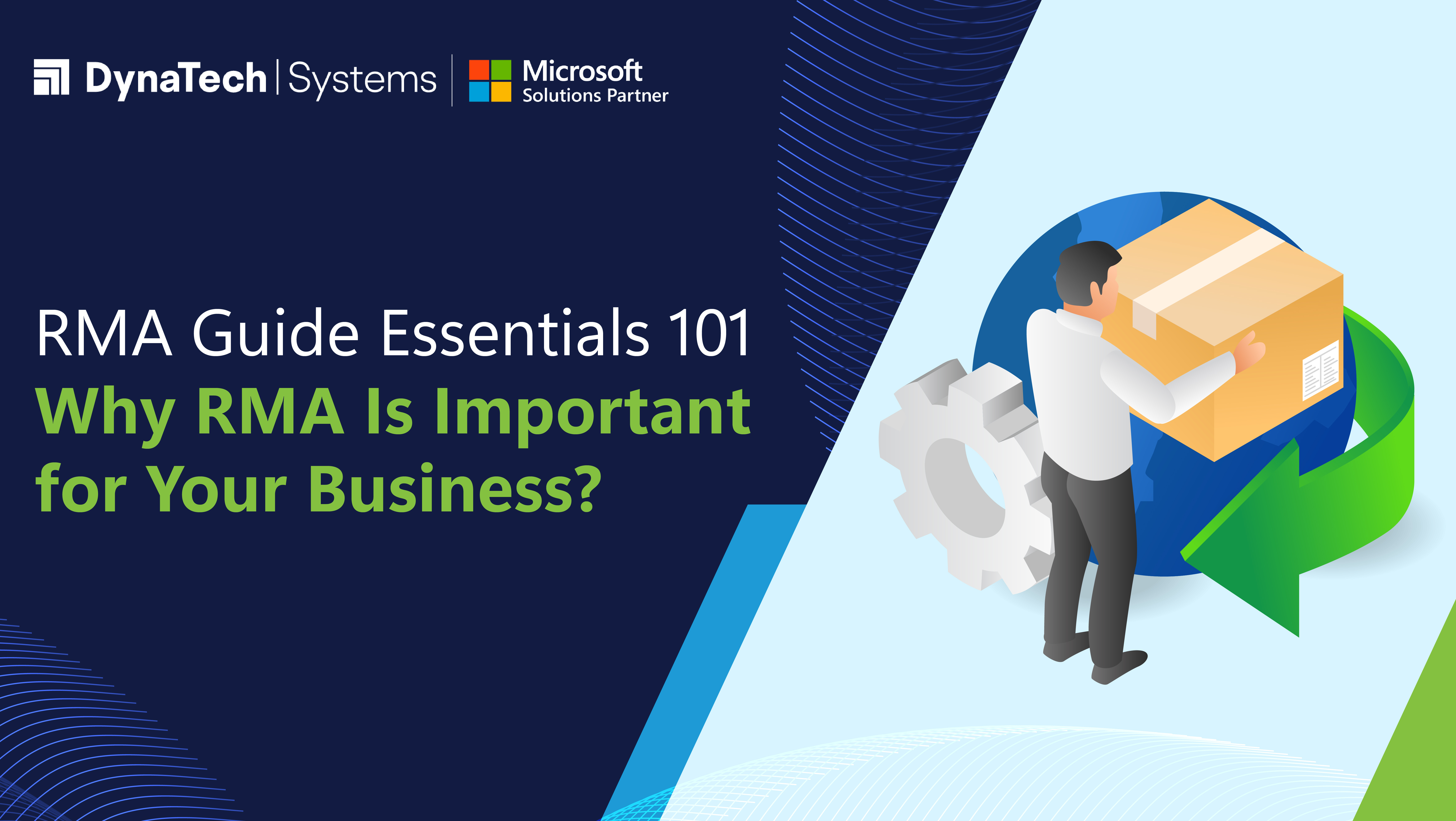In 2021, American shoppers returned over $700 billion in products. Managing returns of products can be displeasing and error prone. No matter if you operate in a B2B or B2C business, dealing with customer returns can be an extremely crucial part of your business. Customers return E-commerce purchases more than in-store purchases. This may rise in the near future. For an efficient and smooth return process, every company must follow a tech let RMA process.
This blog is all about the basics of how RMA process can be vital for Retail Management System and why it is important. Read on this blog till the end to discover a bonus that can be helpful for your business.
What is RMA – The Meaning
RMA simply means Return Merchandise Authorization. RMA is an essential part of any E-commerce business as it offers a structured process to handle product returns. RMA is the first step to begin the return process. It allows the customers to get a refund, replacement, or repair due to any defects in the products or dissatisfaction. RMA is the formal and official process to track, document, and fulfill the return procedure.
Different enterprises have different return policies. But it is absolutely necessary to complete the documentation process and provide clear guidelines. This includes packing and condition assessments to ensure that the returned items are properly ensured. Also, customers must inform the enterprise to complete the RMA process. This can be easily done by requesting the customers with an RMA number.
The RMA process can be especially beneficial for E-commerce businesses and enterprises that operate their business in different geographical locations. If a company follows a robust RMA process, it means that they are more committed to solving issues rapidly and offering an extraordinary customer experience. Customers will also lay trust in your brand and repurchase again and again with easy return policies.
What is RMA Number?
RMA number is one of the key components of the Return Merchandise Authorization system. It is a unique number assigned to a particular order by the company to authorize the product return. For instance, if a customer wants to return the product, they can begin the return process by getting the RMA number from the appropriate customer support channel or automatically generated RMA number.
The RMA number helps to track the products once they are processed. It enables the warehouse to directly and automatically update the information in the ERP system or Warehouse Inventory Management Software. This is important so that no products are lost during the entire RMA process. In short,
- RMA numbers help to track the product’s movement.
- It helps to avoid possible delays.
- Customers can be served better.
Importance of RMA for Customer Satisfaction
One of the main reasons why RMA is so important for business that it directly lays its impact on customer happiness. A robust RMA process can drastically elevate customer experience by making the return process easy, quick, and convenient. This results in higher customer loyalty, repeat business, and powerful brand reputation.
As per a McKinsey Study, enterprises lose 100 returned products.
Hence, it is necessary to implement a robust RMA system that all the product verification rules and return forms. Companies can protect themselves from fraud returns and any other fraudulent activities.
Steps of an Efficient RMA Process For Easy Returns
A well-organized RMA process ensures that customer returns are efficiently handled. A seamless RMA process must contain the following steps:
Step 1. Customer Return Initiation
The RMA process begins the moment the customer contacts any of the customer service channels that you have set up. This may include email, phone, or an online form/portal. In this initial conversation, the customer provides some important details about the product and the reason for the return of the product. They may provide you with the product order number and the issue they are facing with the product.
Step 2. Return Eligibility Verification
After receiving the return request, the customer service agent precisely assesses if it’s eligible against the company’s return policy. They will consider all the criteria to ensure whether the return falls within the company’s return policy guidelines. This includes checking whether the customer wants to return within the return time period, checking the product is unused and not damaged, and verifying that the product is in its original packaging.
Step 3. RMA Request Approval
Once the return eligibility is confirmed, the company provides the customers with an RMA number. This number helps the customer and the company to monitor and track the entire return process. For customers, it helps them simply keep an eye on their return process. For company, this is a kind of identifier that helps in internal tracking and better control over the return process.
Step 4. Shipment of the Returns
After the RMA number is assigned, the customers need to ship back the item to the specified return address. They need to pack the products as per the provided guidelines so that products safely return to their destination. In many cases, E-commerce businesses travel an extra mile to offer top-notch customer experience by picking up the return product from the customers.
Step 5. Product Inspection
Once the product is returned, the return management team logs the RMA number and begins the inspection process. Inspection includes various checks like checking if the products are damaged or used, verifying original packaging, or going through functional testing for applicable items.
Step 6. Return Processing
If the item meets the return criteria and is in good condition, the company simply decides to issue a refund. This commitment only increases customer satisfaction in your company. In case the item doesn’t meet the return criteria or it’s damaged, it can be difficult to decide. In such cases, companies may offer just a replacement or other options like discounts or store credit.
It is vital to maintain transparency while communicating with the customer during the entire RMA process to build trust. This also enhances customer satisfaction and brand loyalty. Communication transparency decreases customer frustration and encourages them to re-purchase from your brand. For efficient communication during the RMA process, implement automated RMA systems to offer real-time return status updates to the customers.
Best Practices for Managing RMA
To ensure a seamless return process and efficiently manage RMA, enterprises must follow the best practices like:
- Implement Clear Return Policies: No hidden information! Just clear policies! Implement clear return policies and information to your customers. This includes the eligibility for returning a product, return time framework, any associated fees, packaging instructions, etc. This clears any doubts or misunderstandings between the company and the customers.
- Automate the RMA Process: Implement a robust RMA system to automate vital operations of the return process, including RMA number generation, return status tracking, and inventory record updates. This aids in eradicating manual errors, enhancing efficiency, and escalating overall customer experience.
- Offer Extraordinary Customer Service: Offering top-notch customer service is the ace of your business. Ensure your customer service department is excellently trained and can handle even complex customer issues related to returns. Don’t forget to offer quick and friendly customer service to increase customer loyalty and happiness.
- Analyze Returns Information: Gather and analyze returns data such as product return rates, reason for returns, etc. This enables your company to address potential issues, identify trends, and make insight-driven decision to minimize returns and magnify customer happiness.
In A Nutshell
Automated RMA systems enable you to recapture 35% of revenue by motivating customers to exchange products rather than return them.
An efficient RMA process is essential for creating a good footprint for your company or brand. By implementing a robust ERP system like Dynamics 365 integrated with an RMA system, you can rapidly respond to your customers’ return queries and track return reasons. Following best practices can help you level up your RMA process and accelerate customer satisfaction, motivating them to re-purchase from your brand.
Bonus FAQs
FAQ 1. How can we secure our company from RMA fraud?
Implementing a driving-edge RMA system with verification policies and detailed return forms can secure your company against any fraudulent returns.
FAQ 2. What should be included in my RMA policy?
An efficient RMA policy must include clear guidelines about the refundable and non-refundable products, returnable and non-returnable products, eligibility of the items, return timeframes, needed documents (like RMA number or receipts or tags), return instructions, and any other associated charges. It is important to provide contact details for customers with queries related to issues.
An RMA slip contains all the information required to process a returned item. Certain businesses provide RMA slip with every product shipped, while others only provide RMA information upon request.




























